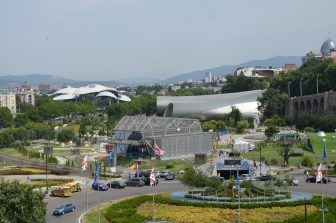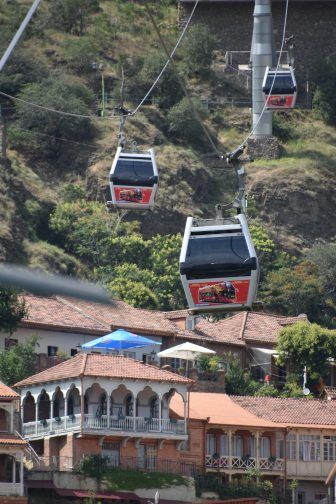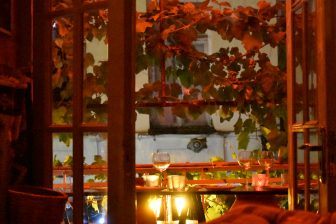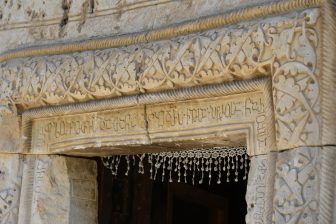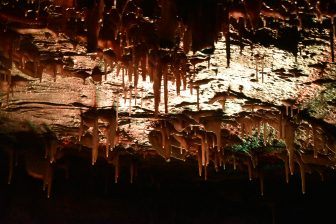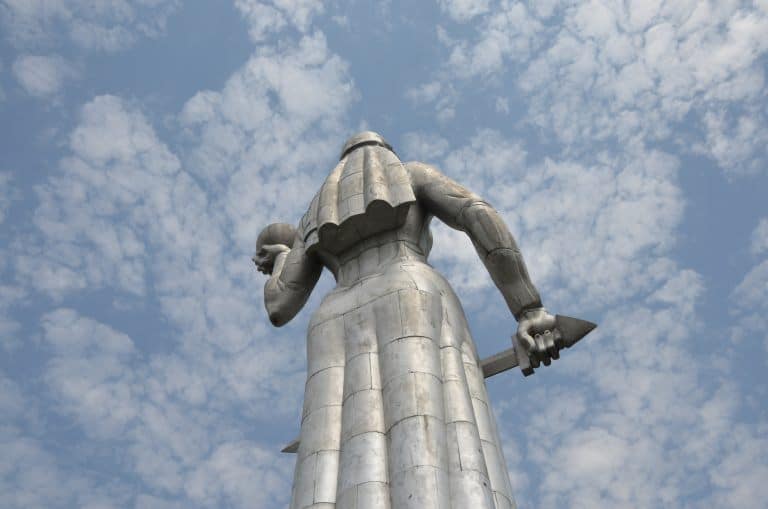
[ July 2018 ] The huge woman in this photo is the ‘Mother of Georgia’ who stands magnificently on the hill in Tbilisi, the capital city of Georgia.
It is made of aluminium and stands at about 20 metres high.
It was built in 1959.
She has a sword in one hand and a wine container in the other, which shows the character of the Georgian people, fighting off 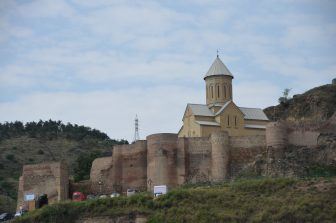
On the same hill, there is Nariqala Fortress, which was built in the 4th century by Persian people but expanded by Arab people.
According to Ana, our guide, “Nariqala means small fortress in Arabic. Because Arabs rules here for 400 years, we still have some traces of them here and there”.
Inside the fortress site, there used to be some residential houses, but now there is the Church of St. Nicholas.
This church was originally built in the 13th century, but the current building was reconstructed in 1990.
There were new frescoes inside the church where they were holding a service.
From this hill, we could see the whole of Tbilisi.
There were not so many high rise buildings, but some strange new buildings were standing out.
For example, the mushroom shaped building was the city hall and the tube shaped one was originally built as a theatre, but is now abandoned.
The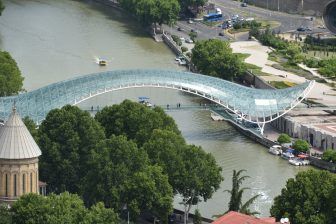
Before sunset, it transmits a peace message by Morse code apparently.
It was designed by an Italian architect and brought here by 200 lorries from Italy.
Ana told us that all these modern strange buildings were built during the Saakashivili presidency.
The glass material was used a lot in the public buildings to symbolise transparency.
We came up this hill by cable car and this was built during that time, too.
We saw this kind of modern building not only in Tbilisi, but also in some small towns later.
Saakashvili was ousted in 2012 and currently the president is Margvelashvili.
However, when Margvelashvili became the president, the system changed in the way that the president’s power became smaller and instead the prime minister became the more powerful position.
And according to Ana, the former prime minister, Ivanishvili, who seized power soon after Saakashvili, “is the wealthy man who has 1% of the Gazprom share and he hated Saakashivili, so he left the theatre building abandoned”.
I looked up this Ivanishvili on the internet and found that, even after he resigned as the prime minister, he still seems the most powerful man in this country.
By the way, when I visited this country the first time 18 years ago, the Georgian president was Shevardnadze, who was famous as the foreign minister of the Soviet Union during the time of the Gorbachev presidency.
Our guidebook says that it was a terrible time, with lots of corruption and crime, but I remember the guide was telling me “They say that Shevardnadze embezzles money, but we have only him at the moment”.

